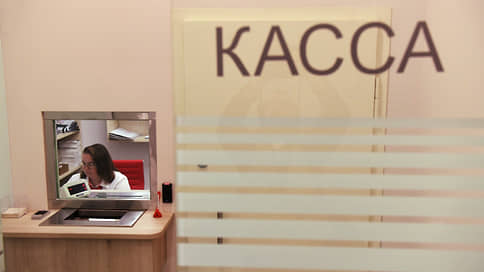The Central Bank recorded a decrease in the average maximum rate on deposits in the largest banks
[ad_1]

At the end of February, the Bank of Russia recorded a decrease in the average maximum rate on deposits of the largest banks to the minimum value this year. Based on the results of the third ten days of February, the decline turned out to be symbolic. However, experts believe that the regulator has recorded the beginning of a downward trend in interest income on citizens’ deposits: everyone is waiting for the key rate to be lowered, and banks no longer need money as much as consumer lending is cooling.
According to according to the Bank of Russiathe average maximum interest rate on deposits of the largest banks in the third ten days of February dropped to 14.789% per annum, the minimum value this year.
The decrease compared to the second decade was insignificant – only seven basis points. However, this may indicate a reversal of a trend that has persisted for more than six months.
From mid-July 2023 to mid-January 2024, the average maximum rate almost doubled – from 7.83% to 14.88% per annum. At the end of January and beginning of February of this year, minor fluctuations remained around the reached level.
Bankers are still putting the possible start of a new trend into the future. Grigory Zhirnov, head of corporate business analytics at Dom.RF Bank, is confident that a steady trend towards lower deposit rates will begin when the Bank of Russia moves to easing monetary policy through lower rates or at least a significant softening of rhetoric. “Until this happens, the Central Bank is most likely planning to start lowering the key rate in the second half of the year,” he says.
Nikita Kulagin, head of the macroeconomic analysis department at Sovcombank, draws attention to the fact that the annual inflation rate (according to Rosstat as of March 4, inflation in annual terms reached a little more than 7.6%, while at the end of last year it was 7.42%) may still rise until June-July, and the Central Bank will keep the key rate at the current level (16%) at least until the beginning of the second half of the year.
Currently, the main influence on rates is exerted by two main factors, bankers note. “Banks now do not need to fight as hard for depositors’ money as they did in December and January, due to the general cooling of the retail lending market,” notes Yuri Latanov, deputy director of the financial markets department at HCF Bank. In addition, according to Mr. Latanov, “there is a decrease in the spread of rates between banks; banks are now attracting deposits at similar rates, which also allows banks to reduce the cost of attraction.”
Deputy Chairman of the Board of Absolut Bank Anton Pavlov believes that the reduction in deposit rates “is associated with a reduction in lending compared to last year, and therefore banks need to attract less resources from the market, including deposits.”
PSB Banking and Financial Markets Analysis Manager Dmitry Gritskevich believes that the main reason for this decline is related to the completion of a number of promotional deposits and the “fine-tuning” of the line of deposits of a number of banks against the background of the slowdown in consumer lending. “Small changes in the average maximum rate for the largest banks (within 10-15 bp) may continue to occur against the backdrop of adjustments to the rates of individual banks,” he points out.
At the same time, bankers are beginning to save on long-term money. Deputy Chairman of the Board of Post Bank Alexey Ozorkhin draws attention to the fact that “first of all, credit institutions are reducing rates on deposits with a maturity of six months and above.” At the same time, in his opinion, it is possible to increase rates on short-term deposits.
At the same time, the decrease in the third ten days of February, according to the Central Bank, affected only rates on deposits for periods from three months to six months (by 0.07 p.p. compared to the second ten days), from six months to a year (by 0.13 p.p. . p.) and over one year (by 0.09 p.p.). Whereas for short-term deposits (up to three months), the rate remained unchanged compared to the second ten-day period and was higher than the rate for the same period in the first ten-day period of February (11.85% per annum versus 11.83% per annum).
At the same time, market experts assess the identified changes more categorically. According to Yuri Belikov, Managing Director for Validation at Expert RA, this is a trend driven by expectations regarding the start of the key rate reduction cycle in the second half of the year.
“For the same reasons, banks may be less active in targeting long-term deposits in their product lines, giving priority to medium-term deposits,” says Yuri Belikov. In his opinion, fixing high rates for long periods would now be unprofitable – funding would become cheaper in the medium term. According to his assessment, the start of the cycle of reducing the key rate before the second half of the year is unlikely, therefore, deposit rates in the coming months “will not fall sharply, but rather continue their gradual decline.”
ACRA Managing Director Valery Piven notes that “banks have recorded a significant influx of client funds in recent months and may face an excess of free resources – all this reduces the likelihood of a resumption of growth in deposit rates.” However, he also believes that a more active reduction in deposit rates is possible if there are more clear signals from the regulator that it is recording a reduction in inflation risks.
[ad_2]
Source link





